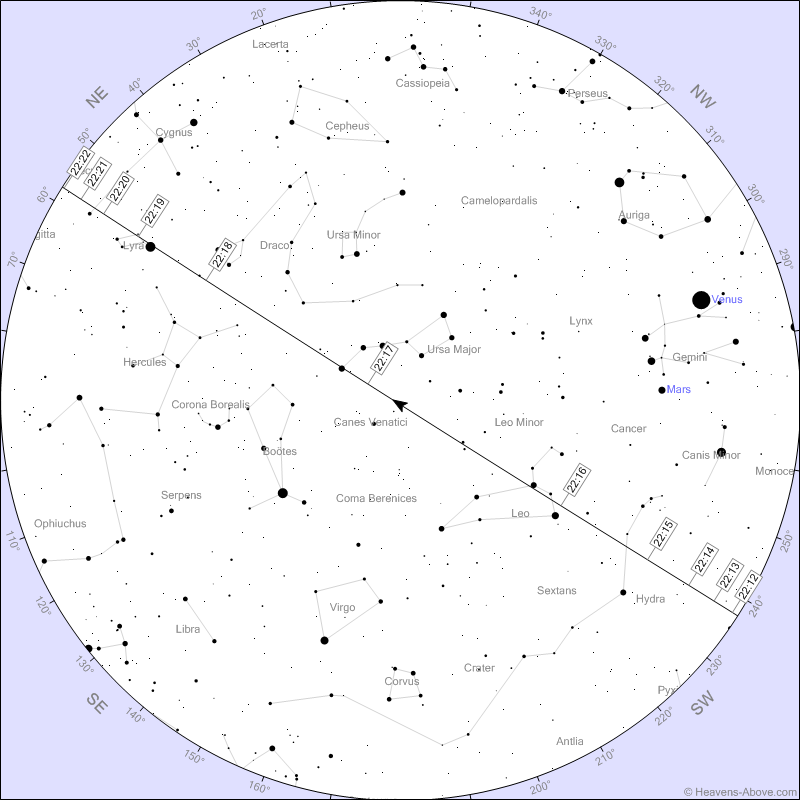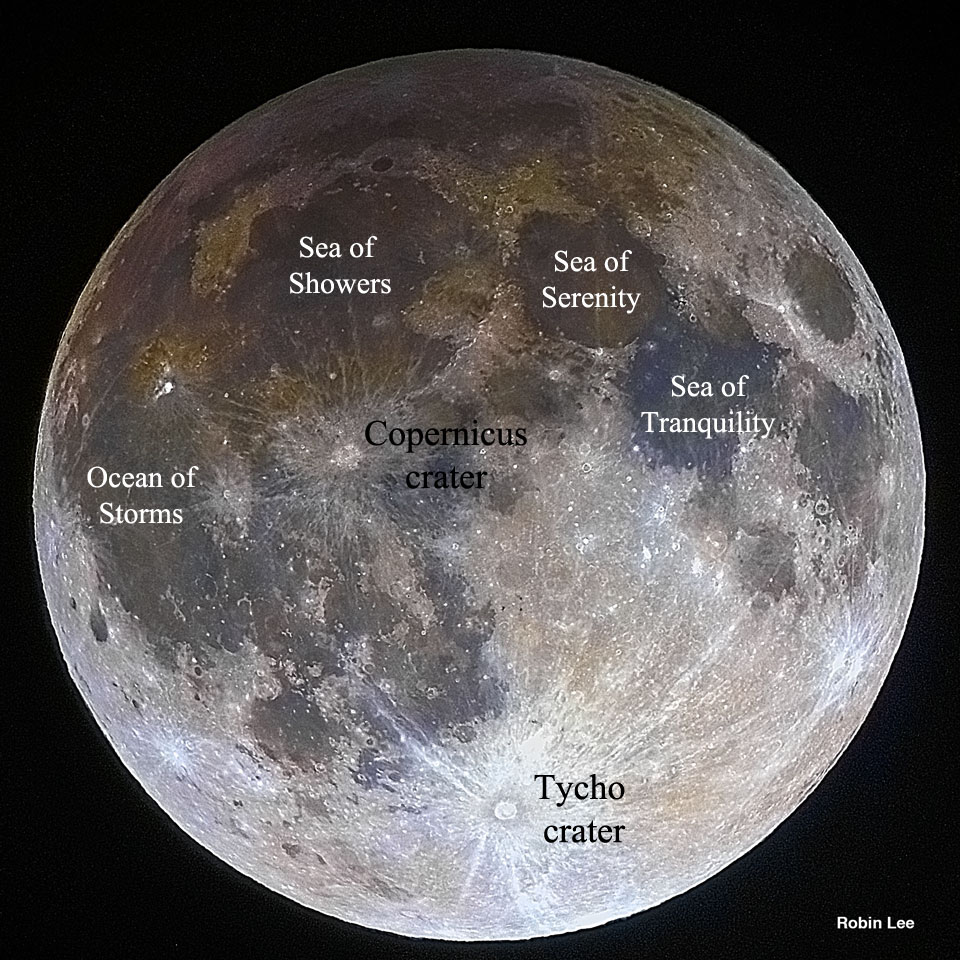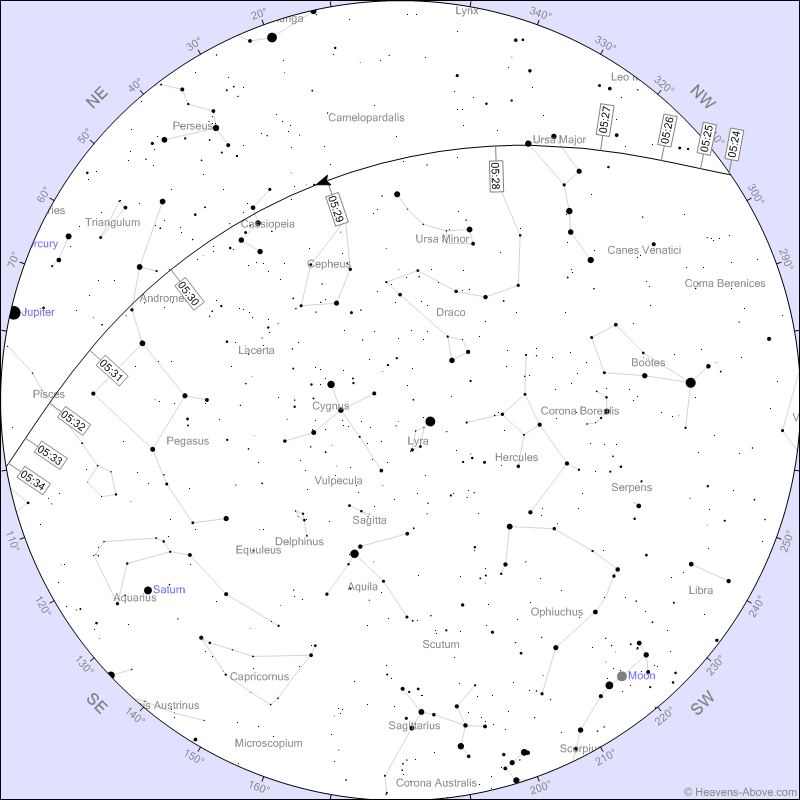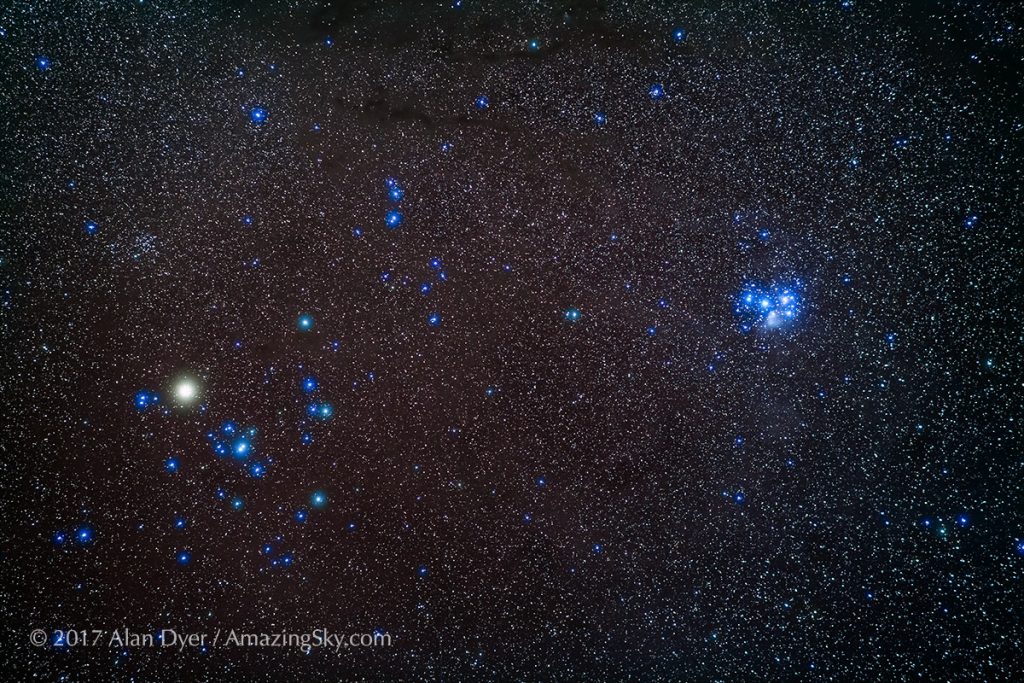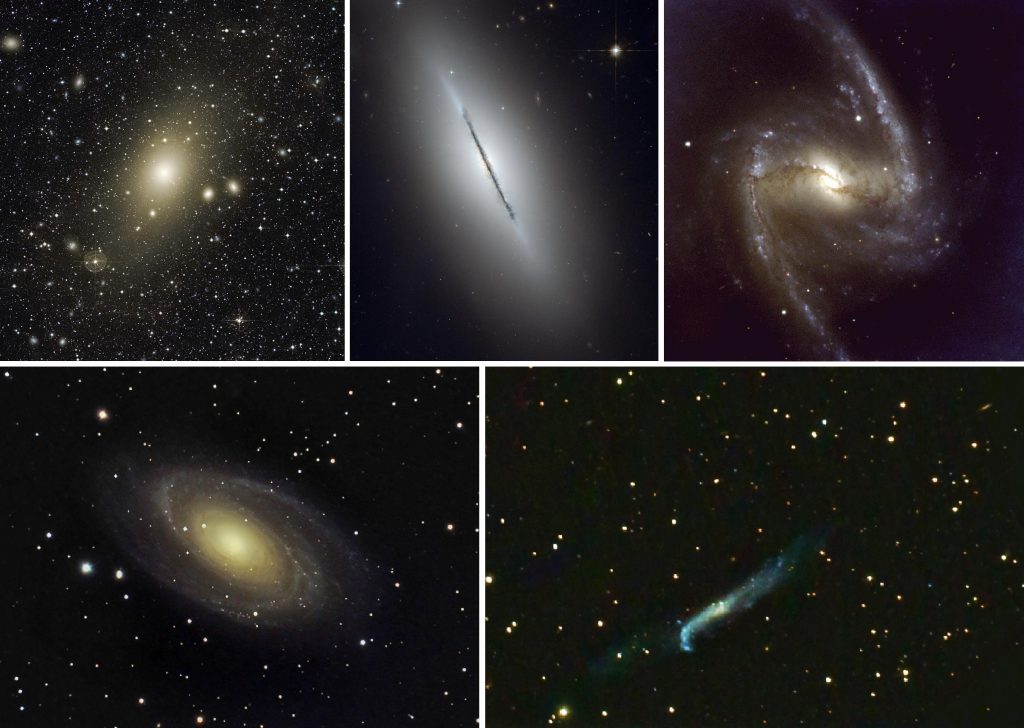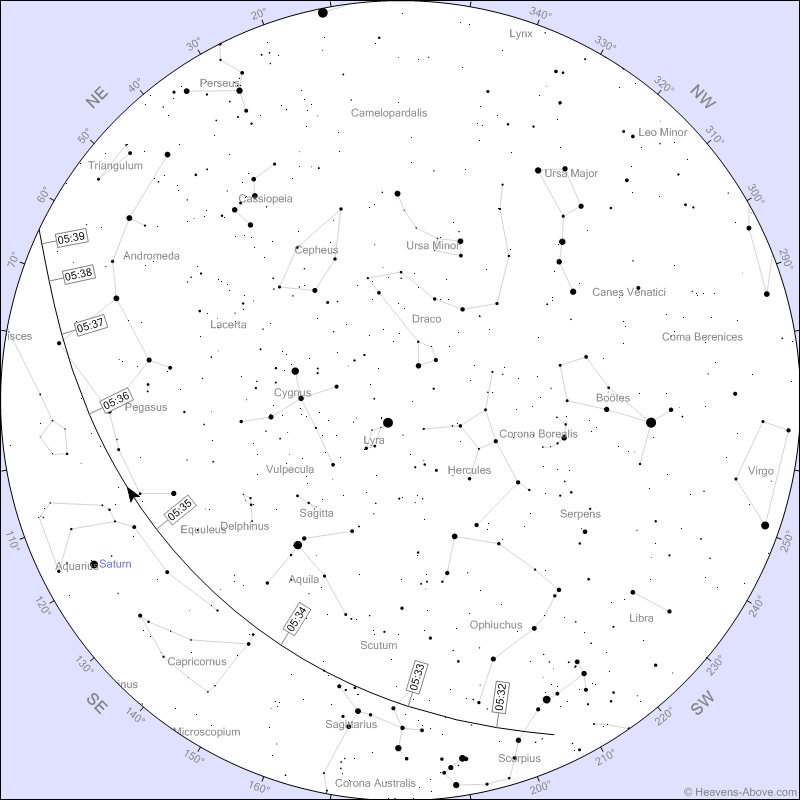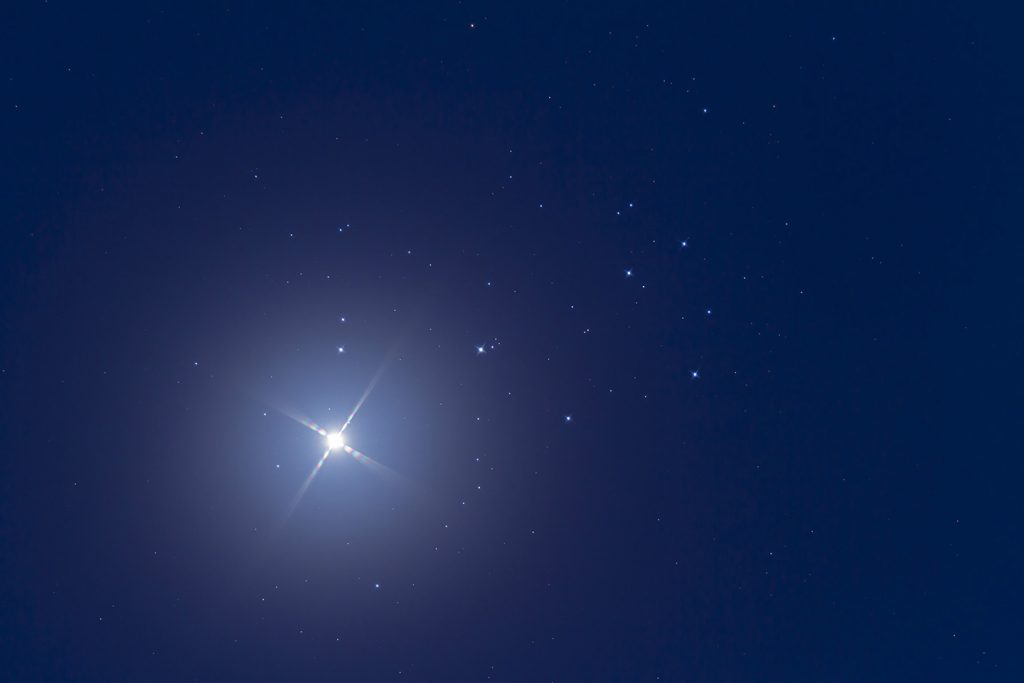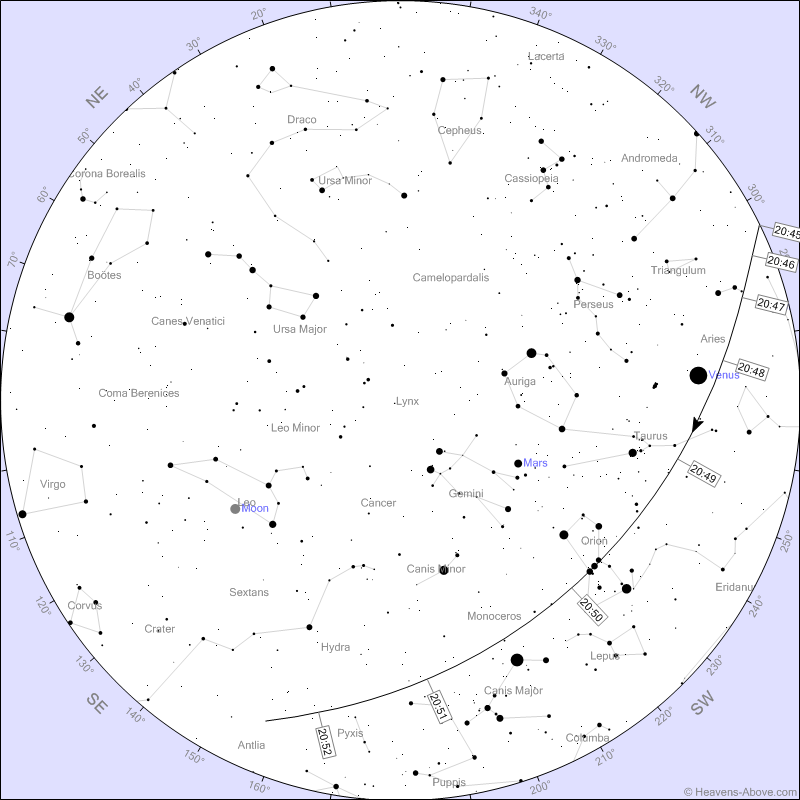Greater Toronto Area Space Station Flyovers for the week of May 7th, 2023
As shown above, on Saturday, May 13, 2023 from 10:14 to 10:20 pm EDT, the International Space Station will be visible flying high overhead of the GTA in an extremely bright pass, rising over the west-southwestern horizon, and then flying closely past the bright stars Regulus, Alkaid, and Vega before setting in the east-northeast. (courtesy:…
Read more
